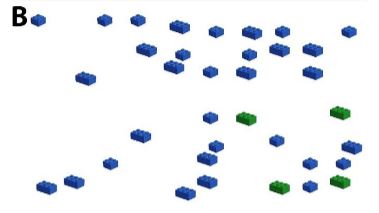Statistical learning of frequent distractor locations in visual search: A role for post-selective distractor rejection processes?

New preprint on PsyArxiv.
Marian Sauter, Institute for Psychology, Bundeswehr University Munich, Munich, Germany sauter.marian@gmail.com
Nina M. Hanning, Department Psychologie, Ludwig-Maximilians-Universität München, Munich, Germany
Heinrich R. Liesefeld, Department Psychologie, Ludwig-Maximilians-Universität München, Munich, Germany
Hermann J. Müller, Department Psychologie, Ludwig-Maximilians-Universität München, Munich, Germany
People can learn to ignore salient distractors that occur frequently at particular locations. This distractor-location probability-cueing effect has been attributed to learnt suppression of the likely distractor locations at a pre-selective stage of attentional-priority computations. An alternative, post-selective account would be that distractors are as likely to capture attention at frequent as at rare locations, but attention can be disengaged faster from distractors at frequent locations. Eye-movement studies confirm that learnt sup-pression, evidenced by a reduced rate of oculomotor capture by distractors at frequent locations, is a ma-jor factor, whereas the evidence is mixed with regard to a role of rapid disengagement (pro: Wang et al., 2019; contra: Di Caro et al., 2019). However, methodological choices in these studies limited conclusions as to the contribution of a post-capture effect. Using an adjusted design, here we positively establish the rapid-disengagement effect and demonstrate further processes contributing to probability cueing beyond the oculomotor capture and disengagement dynamics. Moreover, we examine statistical-learning effects not only for distractors defined in a different visual dimension to the search target (comparable with previ-ous work), but also for distractors defined within the same dimension, which are known to cause particu-larly strong attentional capture. Of theoretical importance, we corroborate our previous finding of respons-es being slowed (on distractor-absent trials) to targets at frequent distractor locations only in the same-, but not the different-, dimension condition. Consistent with a pre-selective origin, this target-location effect already impacted the latency of the very first saccade.



